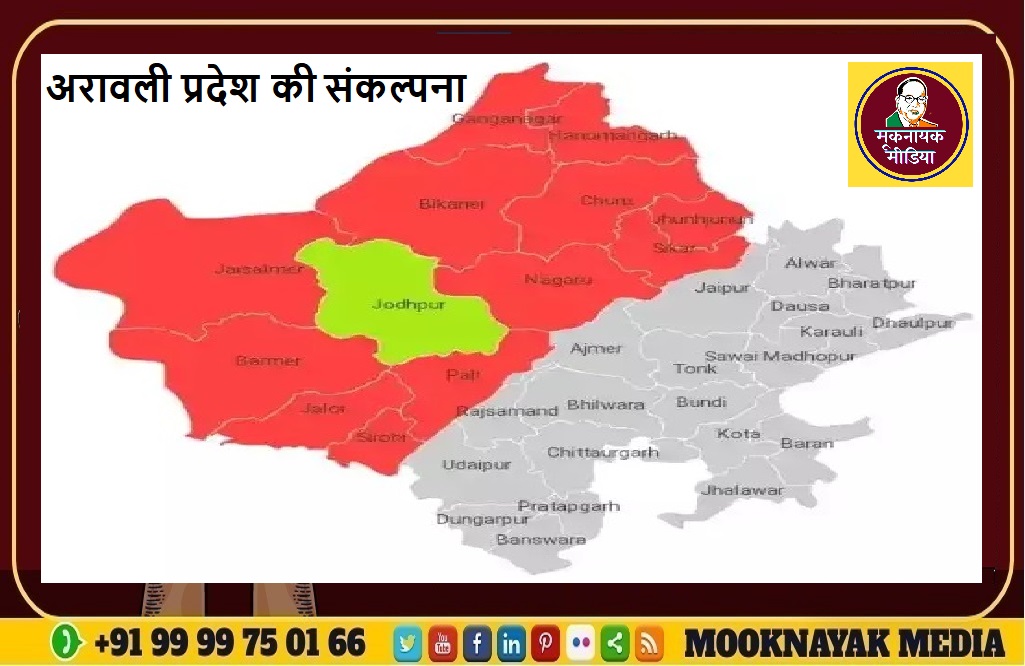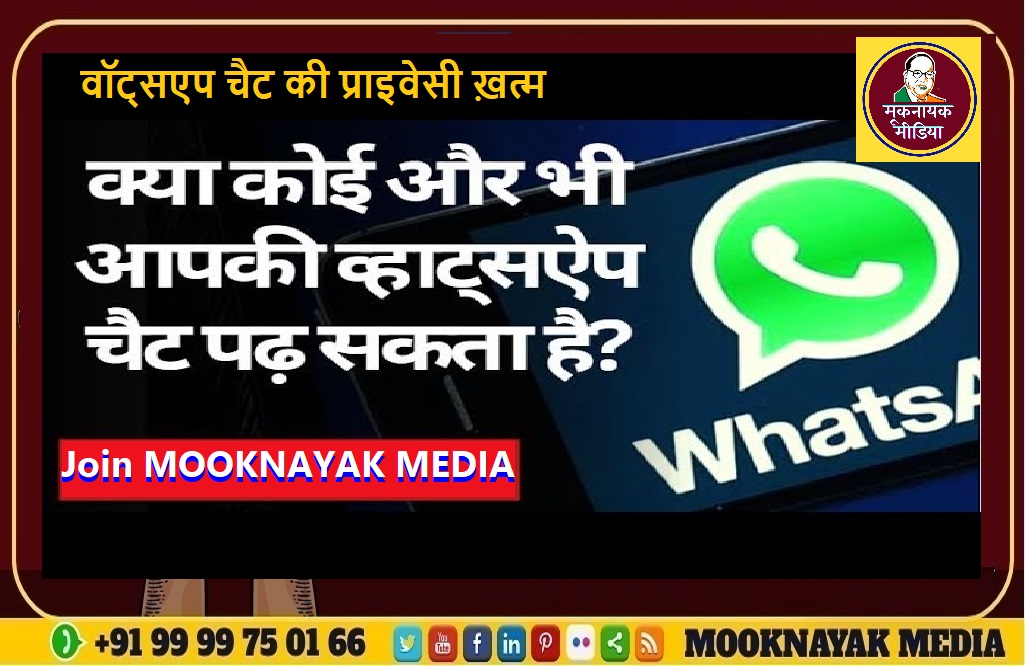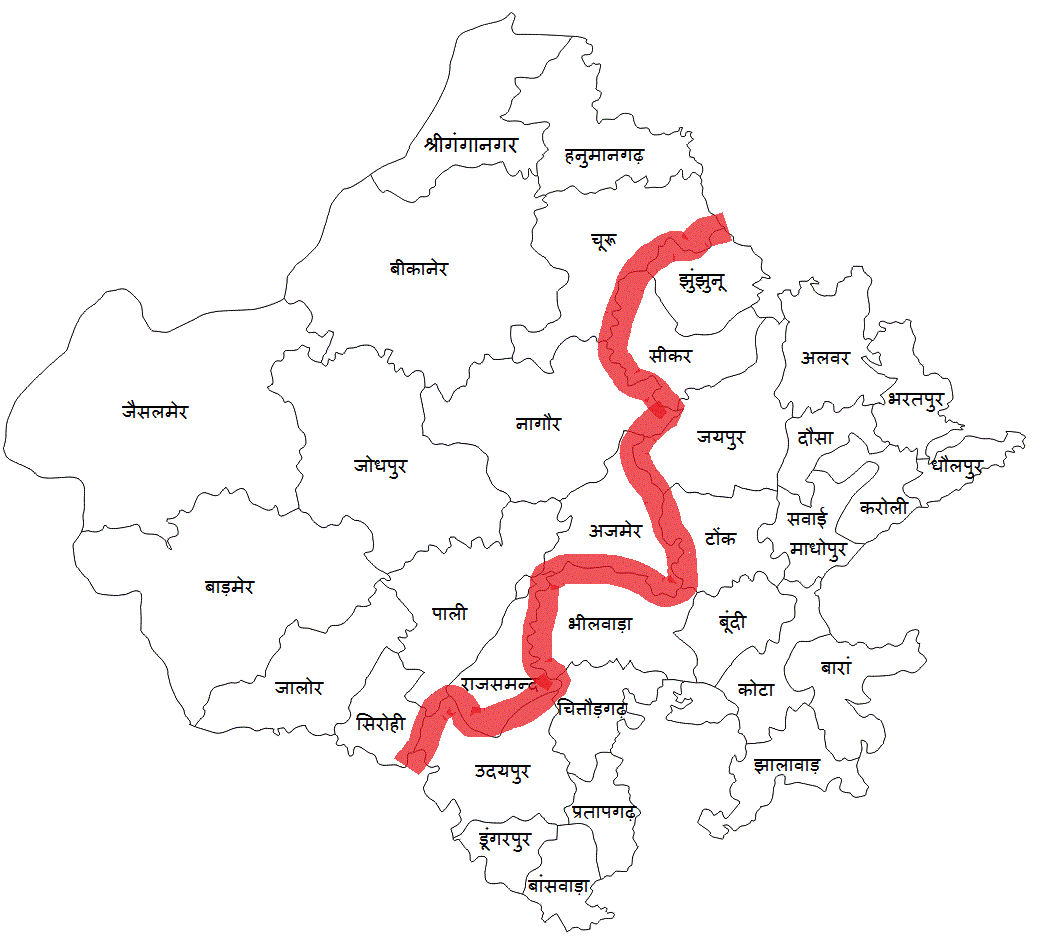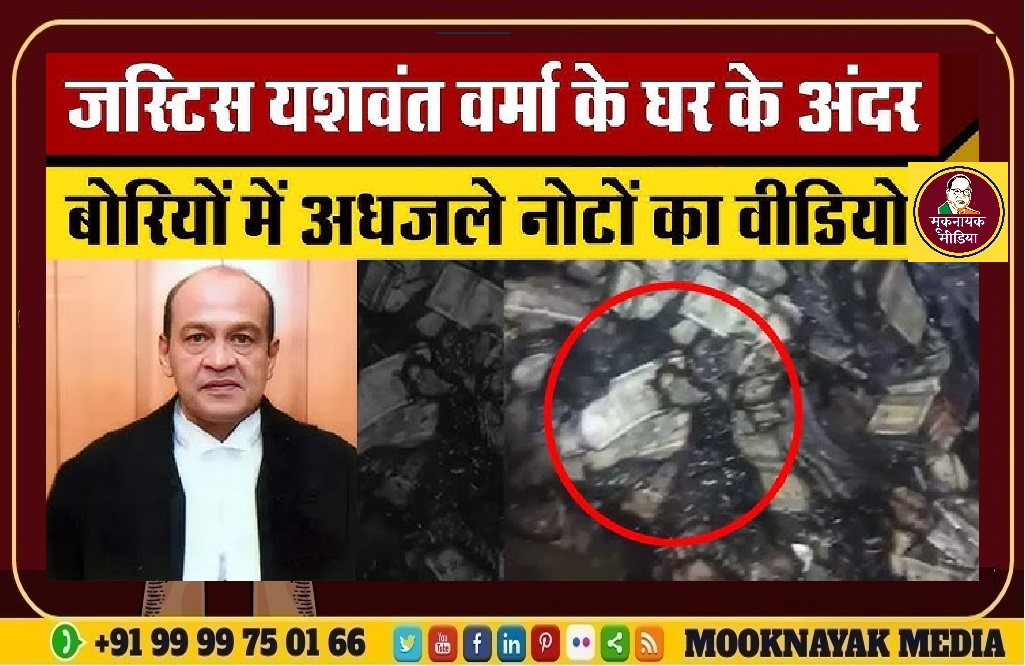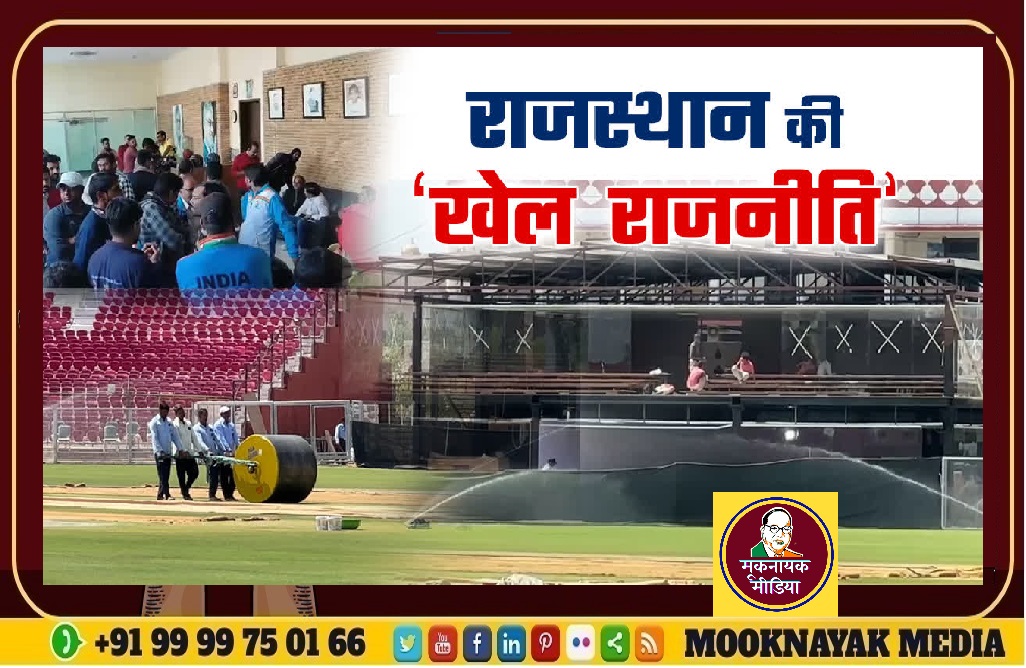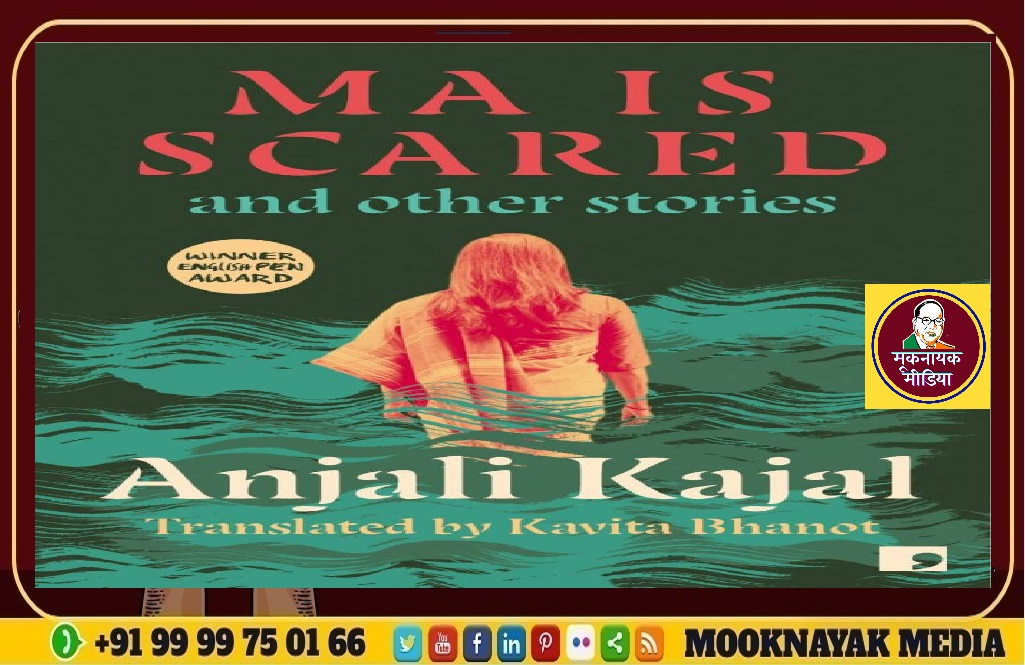
मूकनायक मीडिया ब्यूरो | 08 सितंबर 2024 | जयपुर : अंजलि काजल की लंबे समय से प्रतीक्षित अंग्रेजी में पहली किताब, मा इज स्केयर्ड पेंगुइन रैंडम हाउस इंडिया द्वारा प्रकाशित लघु कथाओं का एक संग्रह है, जो हमें दलित दृष्टिकोण से उत्तरी भारत की महिलाओं के साधारण जीवन में ले जाती है।
‘डरी हुई माँ’ कहानी संग्रह जातिवादी दुनिया में जी रही बेटी की चिंता में एक दलित माँ
यह पुस्तक भारत में हाशिए पर पड़े समुदायों की वास्तविकताओं और दैनिक जीवन को दर्शाती है, इसलिए यह पुस्तक लिंग, जाति और सबसे महत्वपूर्ण रूप से प्रतिरोध की खोज है। शीर्षक कहानी ‘मा इज स्केयर्ड’ में, एक माँ अपनी बेटी के काम से लौटने का बेसब्री से इंतजार करती है, जबकि आलोचनात्मक पड़ोसियों की टिप्पणियों को टालती है।

अपनी रचनाओं में, हिंदी लेखिका अंजलि काजल ने लगातार इस बात की खोज की है कि कैसे महिलाएँ पितृसत्ता और जातिवाद का विरोध करती हैं और साथ ही उसे पुष्ट भी करती हैं। मूल रूप से लुधियाना की रहने वाली अंजलि अब दिल्ली में रहती हैं। मा इज़ स्केयर्ड उनकी पहली किताब है जिसका अंग्रेजी में अनुवाद किया गया है।
अंजलि काजल की कहानियाँ उनके ढाई दशक के लेखन करियर को दर्शाती हैं। हालाँकि उनका गद्य काफी हद तक अलंकृत नहीं है, लेकिन यह आधुनिक भारत में विभिन्न पहचानों के चौराहे पर नारीत्व और मातृत्व के भावपूर्ण, सच्चे-से-जीवन के चित्र प्रस्तुत करता है, जो अभी भी परंपरा के नाम पर पुरानी धारणाओं और विचारों को पकड़े हुए है।
स्त्री-द्वेष की विरासत
“डेल्यूज” और “मा इज स्केयर्ड” जैसी कहानियाँ स्त्री-द्वेष और लैंगिक भेदभाव की रोजमर्रा की जिंदगी को खौफनाक तरीके से घर तक पहुँचाती हैं। दोनों ही समाज में इस कदर समाए हुए हैं कि सार्वजनिक स्थान पर किसी भी महिला के जाने पर उसे पुरुषों के अधिकार, दुर्व्यवहार और सबसे बुरे मामलों में, सीधे-सीधे दुर्व्यवहार का सामना करना पड़ता है। “डेल्यूज” में, पम्मी उन पुरुषों से आहत है जिन्हें वह भेड़ियों के रूप में देखती है जो “झपटने के लिए तैयार हैं”।
उसके पिता का स्पर्श “पम्मी को अपने जीवन में किसी पुरुष से प्राप्त एकमात्र सहनीय स्पर्श था”। अपरिहार्य विवाह के जाल से बचने के लिए, वह उन्नीस वर्ष की आयु में घर से भाग जाती है, लेकिन एक नए बंधन में फँस जाती है जब वह अपने बहुत बड़े ट्यूशन शिक्षक के साथ रहना शुरू करती है जो लगातार उसे नियंत्रित करने लगता है।
शीर्षक कहानी एक आशंकित माँ की है जो अपनी बेटी जसबीर के कॉलेज से वापस आने का इंतज़ार करती है। जसबीर को समुदाय में घुटन भरे माहौल और शहर की कामुकता से नफ़रत है, लेकिन मार्शल आर्ट में प्रशिक्षित होने के कारण वह इसका डटकर मुकाबला करने में सक्षम है। महिलाओं के प्रति घृणा की विरासत ऐसी है कि यह पीढ़ी दर पीढ़ी आगे बढ़ती जाती है, जिसमें महिलाएँ धीरे-धीरे पितृसत्तात्मक मानदंडों को आत्मसात करके उत्पीड़न को स्वीकार करती हैं।
“अच्छे परिवारों” की लड़कियों से कुछ सामाजिक अपेक्षाएँ होती हैं। एक महिला से शादी के बाद काम और घर दोनों को संतुलित करने की उम्मीद की जाती है, अगर उसे पहले से ही नौकरी करने की “अनुमति” है। फिर उन्हें मशीन के दाँतों में सिमटते देखना कोई आश्चर्य की बात नहीं है। फिर भी, वे विद्रोही बनी हुई हैं।
विवाह और मातृत्व
चाहे शहरी हो या ग्रामीण, महिलाओं के पास सीमित विकल्प होते हैं। एक सख्त (लिंग-मानक) समय-सीमा होती है जिसका उन्हें पालन करना होता है, जहाँ सब कुछ शादी और बच्चों पर आकर खत्म होता है। “रेन” में, काम्या और पलाश की शादी हो जाती है क्योंकि उनके दूसरे रिश्ते “सफल” नहीं रहे: “सच तो यह है कि उन्हें कभी समझ ही नहीं आया कि शादी करना इतना ज़रूरी क्यों है।”
बाद में, जब काम्या को पता चलता है कि पलाश के पुराने प्यार से फिर से जुड़ने से वह असहज है, तो वह कहती है: “क्या आपको नहीं लगता कि शादी एक तंग ढाँचे की तरह है जिसमें हम अपनी पूरी ज़िंदगी फिट होने की कोशिश में बिता देते हैं? जब दो लोग एक साथ आते हैं, तो उन्हें दुनिया द्वारा उनके लिए बनाए गए सभी ढाँचों को तोड़ देना चाहिए।”
“तारू, जीनत और बकवास से भरी दुनिया” एक दृष्टिहीन महिला तारू की कहानी है, जो प्रेम विवाह में है और बच्चे पैदा करने में असमर्थ है और गोद लेने का फैसला करती है। कई बार ऐसा लगता है कि वह बच्चा चाहती ही नहीं है, खासकर जब उसे अपनी सास की लगातार तीखी टिप्पणियों का सामना करना पड़ता है, लेकिन जीनत जल्दी ही उसका दिल जीत लेती है।
“घुटन” में, सुषमा का जीवन शांति या आराम के बिना खाली है और उसकी बड़ी बेटी उसे “खाली घोंसला सिंड्रोम” से पीड़ित बताती है। अपने पति की दूसरी जगह पोस्टिंग के कारण, उसे अपने बुजुर्ग माता-पिता की देखभाल के लिए घर पर रहना पड़ा। बहुत बाद में दोनों आखिरकार साथ रहने लगते हैं। हालांकि सुषमा और उनके पति इस चक्र को तोड़ना चाहते हैं, लेकिन नाराजगी सतह पर उबलती है।
रोज़मर्रा की ज़िंदगी में जातिवाद
जातिगत पदानुक्रम के आधार पर भेदभाव भारत में एक सर्वव्यापी वास्तविकता है। काजल ने जाति की अनुभवजन्यता को इस तरह से दर्शाया है कि यह इसकी अस्पष्ट प्रकृति को दर्शाता है। आरक्षण विशेष रूप से एक कांटेदार विषय है। सवर्ण पात्र इसे एक “अनुचित लाभ” या “उलटा भेदभाव” के रूप में देखते हैं जो उनके बच्चों को “उनके माता-पिता और दादा-दादी के पापों” के लिए “उनकी सीटें छीनने” के लिए दंडित करता है।
“इतिहास” में, महिला कथाकार एक पुराने कॉलेज के दोस्त से मिलती है, जो उस समय की याद दिलाती है जब उसे अपनी जाति के कारण सहपाठियों और शिक्षकों दोनों द्वारा नियमित रूप से धमकाया और अपमानित किया जाता था।
“टू बी रिकॉग्नाइज्ड” में, लड़कियों के कॉलेज में दलित शिक्षिका किरण एक दलित छात्रा को अपने संरक्षण में लेती है और उसे एक कविता पाठ कार्यक्रम के लिए मार्गदर्शन करती है जहाँ गीता साबित करती है कि जाति प्रतिभा का निर्धारण नहीं करती है।
यहां तक कि अच्छी भावनाएं भी आकस्मिक जातिवाद से रंगी जा सकती हैं। “पाथवेज़” में, उच्च वर्ग की माला सक्सेना अपने बेटे के दलित सहपाठी, संजय की शिक्षा को प्रायोजित करने की पेशकश करती है, जिसके पिता एक सब्जी की दुकान चलाते हैं, लेकिन वह उसकी मदद से इनकार कर देता है।
उसका आंतरिक एकालाप खुलासा करता है: ” वह अभिमानी है। ये लोग खुद को बहुत बड़ा समझते हैं… गांव में, वे किसी तरह गुजारा कर लेते थे – हमारे खेतों की जुताई करते थे, जो कुछ भी हम उन्हें देते थे, खा लेते थे। ” बाद में, जब वह अपने पिता की दुकान में काम करना शुरू करता है, तो वह कहती है: “ठीक है, यह सबसे अच्छा है।
संजय ने एक सॉफ्टवेयर इंजीनियर के रूप में खुद के साथ क्या किया होगा?… हमारे समाज में व्यवस्था एक कारण से बनाई गई थी।” जब उसके पिता संजय के वर्षों की बचत के बाद आखिरकार दाखिला लेने पर मिठाई बांटते हैं, तो माला उम्मीद के मुताबिक उन्हें छूने से भी इनकार कर देती है।
कविता भनोट ने पुस्तक के अंत में एक संक्षिप्त अनुवादकीय नोट में लिखा है कि वह अनुवाद के बारे में किस तरह आलोचनात्मक ढंग से सोचती हैं। उनका उद्देश्य “अंजलि के पाठ को पश्चिमी संदर्भ में ढालना नहीं था, बल्कि मूल भाषा और संदर्भ के कुछ स्वाद को बनाए रखना था।”
वह ज़्यादातर सफल रही हैं, हालाँकि कुछ अनुवाद विकल्प अंग्रेजी में अजीब लगते हैं। काजल महिलाओं और दलित लोगों के रोज़मर्रा के जीवन के साथ-साथ समान प्रतिनिधित्व और करियर पाने के लिए उन्हें जिन बाधाओं का सामना करना पड़ता है, उनकी एक स्थिर समझ प्रदर्शित करती है। इन सबके बीच, ये पात्र आत्मा की अद्भुत शक्ति प्रदर्शित करते हैं।
यह भारत में एक गर्म विषय है और इस पर बहस बहुत तीखी है, न केवल इस बात पर कि “आरक्षण” होना चाहिए या नहीं, बल्कि किसके लिए, और सकारात्मक कार्रवाई के लिए अन्य किस तरह के विकल्प हैं। उदाहरण के लिए, निजी निगम, आम तौर पर, अभिजात्य वर्ग बने हुए हैं।
देश के कुछ हिस्सों में, कुछ पुराने और निश्चित रूप से पुराने रीति-रिवाजों को नए सिरे से समर्थन दिया जा रहा है, जिसमें राजनीतिक दल अपने एजेंडे के अनुकूल परंपराओं का चयन करते हैं। उस संदर्भ में, उत्पीड़ित समुदायों के प्रति सम्मान की कमी और महिलाओं के प्रति सम्मान का अभाव एक साथ चलते हैं। काजल ने स्पष्ट रूप से यह परिकल्पना नहीं की है, लेकिन उनके नायक अपनी परिस्थितियों में अपमान और अन्याय से प्रेरित होकर एक स्टैंड लेते हैं।
यह उनकी कल्पना में आशापूर्ण तत्व है, जब लोग लिंग और जाति की सीमाओं के पार एक-दूसरे को समझना और उनका समर्थन करना शुरू करते हैं। ऐसा करने के लिए, उन्हें अपने स्वयं के परिवारों, दोस्तों या कार्यालय के कबीलों के निहित पूर्वाग्रहों को अस्वीकार करना होगा।
यह भी पढ़ें : अमृतलाल मीणा बिहार की ब्यूरोक्रेसी के बॉस, उनका बेटा सफल उद्यमी
इससे भी महत्वपूर्ण बात यह है कि इस पुस्तक की अंतिम कहानी, “सैनिटाइज़र”, जो पहली कोविड-19 लहर में सेट है, सबसे कम उम्र की पीढ़ी, स्कूल जाने वाले, सोचने के लिए समय निकालते हैं और विभाजन के पार एक-दूसरे का साथ देते हैं। यहीं भविष्य निहित है।
बिरसा अंबेडकर फुले फातिमा मिशन को आगे बढ़ाने के लिए ‘मूकनायक मीडिया’ को आर्थिक सहयोग जरूर कीजिए





